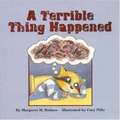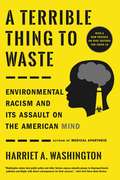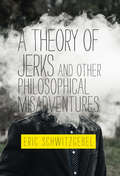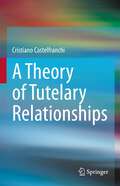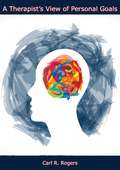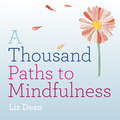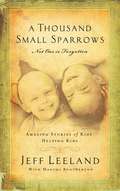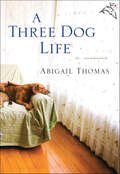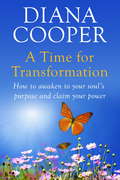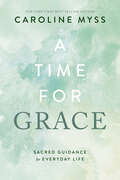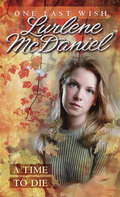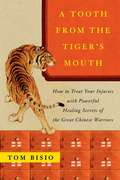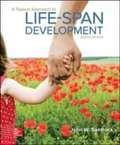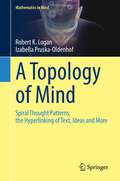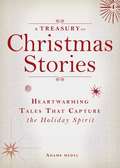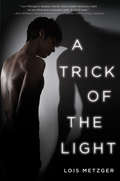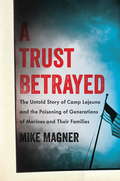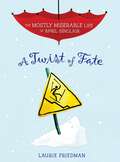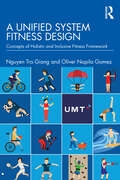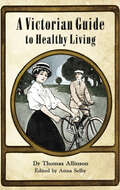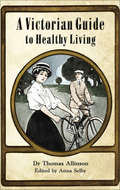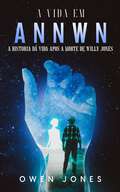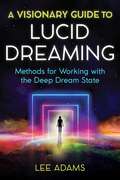- Table View
- List View
A Terrible Thing Happened
by Margaret M. HolmesAfter Sherman sees something terrible happen, he becomes anxious and then angry, but when a caring adult helps him talk about these emotions he feels better.
A Terrible Thing to Waste: Environmental Racism and Its Assault on the American Mind
by Harriet Washington<P><P>Did you know...Middle-class African American households with incomes between $50,000 and $60,000 live in neighborhoods that are more polluted than those of very poor white households with incomes below $10,000. <P><P>When swallowed, a lead-paint chip no larger than a fingernail can send a toddler into a coma -- one-tenth of that amount will lower his IQ. <P><P>Nearly two of every five African American homes in Baltimore are plagued by lead-based paint. Almost all of the 37,500 Baltimore children who suffered lead poisoning between 2003 and 2015 were African American.From injuries caused by lead poisoning to the devastating effects of atmospheric pollution, infectious disease, and industrial waste, Americans of color are harmed by environmental hazards in staggeringly disproportionate numbers. <P><P>This systemic onslaught of toxic exposure and institutional negligence causes irreparable physical harm to millions of people across the country-cutting lives tragically short and needlessly burdening our health care system. But these deadly environments create another insidious and often overlooked consequence: robbing communities of color, and America as a whole, of intellectual power. <P><P>The 1994 publication of The Bell Curve and its controversial thesis catapulted the topic of genetic racial differences in IQ to the forefront of a renewed and heated debate. <P><P>Now, in A Terrible Thing to Waste, award-winning science writer Harriet A. Washington adds her incisive analysis to the fray, arguing that IQ is a biased and flawed metric, but that it is useful for tracking cognitive damage. <P><P>She takes apart the spurious notion of intelligence as an inherited trait, using copious data that instead point to a different cause of the reported African American-white IQ gap: environmental racism - a confluence of racism and other institutional factors that relegate marginalized communities to living and working near sites of toxic waste, pollution, and insufficient sanitation services. <P><P>She investigates heavy metals, neurotoxins, deficient prenatal care, bad nutrition, and even pathogens as chief agents influencing intelligence to explain why communities of color are disproportionately affected -- and what can be done to remedy this devastating problem. Featuring extensive scientific research and Washington's sharp, lively reporting, A Terrible Thing to Waste is sure to outrage, transform the conversation, and inspire debate.
A Textbook Of Dental Homoeopathy: For Dental Surgeons, Homoeopathists and General Medical Practitioners
by Dr Colin B. LessellThis book has long been awaited by professionals - a complete, modern, practical and usable book on the application of homoeopathy to oral medicine, general dentistry and oral surgery.It will not be out of place on the bookshelf or in the office of any dental surgeon, committed homoeopathist or medical doctor.The first and lesser part of the book is a basic introduction to the principles of homoeopathy. The second and greater part is in encyclopaedic form, being a combined therapeutic index of orofacial disease and materia medica of virtually all the therapeutic substances mentioned in the text. It also constitutes a self-tuition course in dental homoeopathy. Appendix One suggests the structure for an initial dental pharmacy in clinical practice, and Appendix Two contains a modern view of the important matter of mercury toxicity.
A Theory of Jerks and Other Philosophical Misadventures (The\mit Press Ser.)
by Eric SchwitzgebelA collection of quirky, entertaining, and reader-friendly short pieces on philosophical topics that range from a theory of jerks to the ethics of ethicists.Have you ever wondered about why some people are jerks? Asked whether your driverless car should kill you so that others may live? Found a robot adorable? Considered the ethics of professional ethicists? Reflected on the philosophy of hair? In this engaging, entertaining, and enlightening book, Eric Schwitzgebel turns a philosopher's eye on these and other burning questions. In a series of quirky and accessible short pieces that cover a mind-boggling variety of philosophical topics, Schwitzgebel offers incisive takes on matters both small (the consciousness of garden snails) and large (time, space, and causation). A common theme might be the ragged edge of the human intellect, where moral or philosophical reflection begins to turn against itself, lost among doubts and improbable conclusions. The history of philosophy is humbling when we see how badly wrong previous thinkers have been, despite their intellectual skills and confidence. (See, for example, “Kant on Killing Bastards, Masturbation, Organ Donation, Homosexuality, Tyrants, Wives, and Servants.”) Some of the texts resist thematic categorization—thoughts on the philosophical implications of dreidels, the diminishing offensiveness of the most profane profanity, and fatherly optimism—but are no less interesting. Schwitzgebel has selected these pieces from the more than one thousand that have appeared since 2006 in various publications and on his popular blog, The Splintered Mind, revising and updating them for this book. Philosophy has never been this much fun.
A Theory of Tutelary Relationships
by Cristiano CastelfranchiThe purpose of the book is to propose and exploit an analytical, critical, well defined theory of a very crucial human social relation that I call “Tutelarity/ Tutelage”. This will thus explain how/why such relation is so relevant at any layer of sociality: from affective relationships, to social cooperation and interactions, to politics and democracy. The approach is theoretical and strongly grounded on cognitive science and the models of human mind: beliefs, desires, expectations, emotions, etc. Written in an accessible way, it will be of interest for a large audience, specifically to researchers and scientists interested in cognitive science and the dynamics of social relationships alike.
A Therapist's View of Personal Goals
by Carl R. RogersThis pamphlet, by Carl Rogers who developed what he called client-centered therapy, briefly lays out a pathway of life that values self-awareness and acceptance, being the self one truly is, an authenticity that can be the basis of creativity. He observes that this is the life-goal that people find as they participate in therapy that frees up their choices. While this may by now be familiar to many, it is a concise and clear statement that could be helpful to others. Our culture still imposes rigid expectations and judgments on us. This is not explicitly about a spiritual life, but it is a nice introduction to Carl Rogers' enduring insights.—Print ed.
A Thousand Paths to Mindfulness (1000 Paths Ser.)
by Liz DeanMindfulness is about letting go of the stress around you and finding ways of being in the moment. The latest addition to the 'Thousand Paths' series provides inspiration and ways to keep you relaxed and focused in life to feel more fulfilled. The 'Thousand Paths' series aims to help readers learn how to achieve mindfulness by taking charge of their emotional well-being and taking the time to appreciate the little things, rather than just rushing around from A to B. This book of quotes will help you to slow down and refocus your mind, using the simple technique of mindfulness to feel better both mentally and physically.
A Thousand Small Sparrows: Amazing Stories of Kids Helping Kids
by Jeff LeelandIn 1992, Jeff and Kristi Leeland's infant son, Michael, needed a bone marrow transplant. It cost $200,000 they didn't have. That's when Dameon, the most picked-on kid in the junior high where Jeff taught, emptied his bank account and handed Jeff twelve $5 bills to help save Michael's life. Other students rallied behind Dameon's $60 donation of hope--and a community rallied behind them. In less than four weeks, they raised over $227,000 for Michael's life-saving transplant.Sometimes it's the small who are mighty and the young who are wise....Kids will do heroic things when they have heroic things to do. Out of the Leelands' experience came Sparrow Clubs USA, an organization of kids helping kids in medical need. Each child helped by Sparrow Clubs faces a battle for life, and yet each of these sparrows lives with a vibrant courage. Taking you into the communities that became sanctuaries of love for families in need, A Thousand Small Sparrows will revive your hope in the Father heart of a God who cares. This is a book about the power of compassion that can change the world--one sparrow at a time.
A Three Dog Life
by Abigail ThomasWhen Abigail Thomas’s husband, Rich, was hit by a car, his brain shattered. Subject to rages, terrors, and hallucinations, he must live the rest of his life in an institution. He has no memory of what he did the hour, the day, the year before. This tragedy is the ground on which Abigail had to build a new life. How she built that life is a story of great courage and great change, of moving to a small country town, of a new family composed of three dogs, knitting, and friendship, of facing down guilt and discovering gratitude. It is also about her relationship with Rich, a man who lives in the eternal present, and the eerie poetry of his often uncanny perceptions. This wise, plainspoken, beautiful book enacts the truth Abigail discovered in the five years since the accident: You might not find meaning in disaster, but you might, with effort, make something useful of it.
A Time For Transformation: How to awaken to your soul's purpose and claim your power
by Diana CooperWe all have the ability to transform our lives. In A Time for Transformation soul therapist Diana Cooper shows us how to awaken to our soul's purpose. Step by step, she takes us through the processes needed to change the way we think and live our lives, so that we can create a better reality for ourselves and others. Using examples from her own life and from her work with clients and in workshops, Diana looks at many key areas, including:? prosperity? abundance? success? careers? resolving conflict? healing hurts? our shadow self? past lives? claiming our power? relationships and much more. This practical and inspirational book shows us beyond doubt that we can transform our lives - and that the time to do it is now! For more information on Diana Cooper please visit www.dianacooper.com
A Time For Transformation: How to awaken to your soul's purpose and claim your power
by Diana CooperWe all have the ability to transform our lives. In A Time for Transformation soul therapist Diana Cooper shows us how to awaken to our soul's purpose. Step by step, she takes us through the processes needed to change the way we think and live our lives, so that we can create a better reality for ourselves and others. Using examples from her own life and from her work with clients and in workshops, Diana looks at many key areas, including:· prosperity· abundance· success· careers· resolving conflict· healing hurts· our shadow self· past lives· claiming our power· relationships and much more. This practical and inspirational book shows us beyond doubt that we can transform our lives - and that the time to do it is now! For more information on Diana Cooper please visit www.dianacooper.com
A Time for Grace: Sacred Guidance for Everyday Life
by Caroline Myss(Originally published as DEFY GRAVITY) New York Times best-selling author Caroline Myss investigates the mystical phenomenon of healing and the presence of grace in every life.What is grace? How does grace work? How do I know if I've ever had an experience of grace in my life? For decades, readers and students have turned to medical intuitive Caroline Myss for answers to these essential questions. In these pages, she takes readers on a transformative journey to investigate the "holy authority" of grace and find tools to heal themselves and their lives.Originally published as Defy Gravity, this searching and eloquent book offers a message that we need now more than ever. Inspired by ordinary people who overcame a wide array of physical and psychological ailments, Caroline dove into the works of the great mystics to gain a deeper understanding of healing's spiritual underpinnings. Using what she discovered, she invites us into an intimate and healing engagement with the soul, which we experience through exploring our seven shadow passions, building an empowered inner self around our seven inherent graces, and learning how to work with the mystical laws that govern it.With this knowledge, you can break through the boundaries of ordinary reason. You can heal from illness, heartbreak, and pain. You can learn to live fearlessly. And you can start to discern the guidance of grace in every moment of your life.
A Time to Die (One Last Wish #1)
by Lurlene McdanielSixteen-year-old Kara Fischer has cystic fibrosis and only months to live. But the close-knit bond she develops with Vince, who also has the disease, helps her come to terms with her own illness. Given one last wish, Kara wonders if miracles could really happen.
A Tooth from the Tiger's Mouth: How to Treat Your Injuries with Powerful Healing Secrets of the Great Chinese Warrior
by Tom BisioA renowned expert in Chinese sports medicine and martial arts reveals ancient Eastern secrets for healing common injuries, including sprains, bruises, deep cuts, and much more.For centuries, Chinese martial arts masters have kept their highly prized remedies as carefully guarded secrets, calling such precious and powerful knowledge "a tooth from the tiger's mouth." Now, for the first time, these deeply effective methods are revealed to Westerners who want alternative ways to treat the acute and chronic injuries experienced by any active person.While many books outline the popular teachings of traditional Chinese medicine, only this one offers step-by-step instructions for treating injuries. Expert practitioner and martial artist Tom Bisio explains the complete range of healing strategies and provides a Chinese first-aid kit to help the reader fully recover from every mishap: cuts, sprains, breaks, dislocations, bruises, muscle tears, tendonitis, and much more.He teaches readers how to: Examine and diagnose injuries Prepare and apply herbal formulas Assemble a portable kit for emergencies Fully recuperate with strengthening exercises and healing dietary adviceComprehensive and easy to follow, with drawings to illustrate both the treatment strategies and the strengthening exercises, this unique guidebook will give readers complete access to the powerful healing secrets of the great Chinese warriors.
A Topical Approach To Lifespan Development (8th Edition)
by John W. SantrockAs a master teacher, John Santrock connects students to current research and real-world application, helping students see how developmental psychology plays a role in their own lives and future careers. Through an integrated, personalized digital learning program, students gain the insight they need to study smarter and improve performance.
A Topology of Mind: Spiral Thought Patterns, the Hyperlinking of Text, Ideas and More (Mathematics in Mind)
by Robert K. Logan Izabella Pruska-OldenhofThis volume covers many diverse topics related in varying degrees to mathematics in mind including the mathematical and topological structures of thought and communication. It examines mathematics in mind from the perspective of the spiral, cyclic and hyperlinked structures of the human mind in terms of its language, its thoughts and its various modes of communication in science, philosophy, literature and the arts including a chapter devoted to the spiral structure of the thought of Marshall McLuhan. In it, the authors examine the topological structures of hypertext, hyperlinking, and hypermedia made possible by the Internet and the hyperlinked structures that existed before its emergence. It also explores the cognitive origins of mathematical thinking of the human mind and its relation to the emergence of spoken language, and studies the emergence of mathematical notation and its impact on education. Topics addressed include:• The historical context of any topic that involves how mathematical thinking emerged, focusing on archaeological and philological evidence. • Connection between math cognition and symbolism, annotation and other semiotic processes. • Interrelationships between mathematical discovery and cultural processes, including technological systems that guide the thrust of cognitive and social evolution. • Whether mathematics is an innate faculty or forged in cultural-historical context• What, if any, structures are shared between mathematics and language
A Treasury of Christmas Stories: Heartwarming Tales That Capture the Holiday Spirit (Christmas Stories)
by Adams MediaA Treasury of Christmas Stories is an uplifting collection of holiday tales from people just like you. You can read about the special gift that made a family’s Christmas or a mall Santa who learned sign language in order to bring holiday cheer to a little boy and enjoy their stories as you reflect on Christmas memories of your own. This wonderful collection celebrates the spirit of the holiday with one story for each of the twelve days of Christmas. Enjoy and happy holidays!
A Trick of the Light
by Lois MetzgerMike Welles had everything under control. He was a good student, an outfielder on the baseball team, a good son, a loyal friend. But that was before. Now things are rough at home, and theyre getting confusing at school. Hes losing his sense of direction, and he feels like a mess. Then theres a voice in his head. A friend, trying to help him regain control. More than that: The voice can guide him to become better and stronger than he was before, to rid his life of everything holding him back. To figure out who he is again. If only Mike will listen. Writing with devastating power and precision, acclaimed author Lois Metzger gives us the story of one young mans battle with his own shadows--a spare, stark, and vital tale of the way in which the things we build to protect ourselves can threaten to destroy us.
A Trust Betrayed: The Untold Story of Camp Lejeune and the Poisoning of Generations of Marines and Their Families (A Merloyd Lawrence Book)
by Mike MagnerWhile the big bad corporation has often been the offender in many of the world's greatest environmental disasters, in the case of the mass poisoning at Camp Lejeune the culprit is a revered institution: the US Marine Corps. For two decades now, revelations have steadily emerged about pervasive contamination, associated clusters of illness and death among the Marine families stationed there, and military stonewalling and failure to act. Mike Magner's chilling investigation creates a suspenseful narrative from the individual stories, scientific evidence, and smoldering sense of betrayal among those whose motto is undying fidelity. He also raises far-reaching and ominous questions about widespread contamination on US military bases worldwide.
A Twist of Fate (The Mostly Miserable Life of April Sinclair #7)
by Laurie FriedmanApril is stunned when her grandma announces she has cancer. And rather than undergo difficult treatment, Gaga wants to cross an item off her bucket list: going skiing in the mountains. So she's taking the whole family to Utah! Despite their matching ski outfits, April is looking forward to time with her grandma and cousins. But tension builds as Sophie mysteriously shuts April out, Harry swoons over another skier, the aunts tiptoe around Gaga's feelings, and April faces peer pressure on the slopes. When disaster strikes, April has to try to embrace Gaga's approach: that life is what you make of it.
A Unified System Fitness Design: Concepts of Holistic and Inclusive Fitness Framework
by Tra Giang Nguyen Oliver Napila GomezA Unified System Fitness Design proposes a new fitness framework that encompasses all fitness indicators in a holistic and comprehensive manner, striving to provide a comprehensive and inclusive definition of physical fitness, one that considers all attributes contributing to overall well-being, and crafting a flexible framework that can adapt to diverse contexts and purposes of physical fitness assessments. This new book is divided into three parts. Part I explores redefining and reconstructing the concepts of an inclusive and holistic fitness framework. In Part II, the reader is encouraged to embark on a journey to discover the interconnected system functions of physiological health, homeostasis, motor control, and energy regulation. Part III reinforces the role of wellness in the Unified Systems Fitness Design, guided by the principles of inclusion and equity, in the decision-making process. Finally, the perpetual complementation theory emerged from the design, making sense of the cyclical connection between the system functions for health and skill and strengthening the Health-Ability-Task Suitability (HATS) Framework. There are still many uncharted territories in the realm of fitness and wellness. A Unified System Fitness Design addresses these gaps in the literature and practice and seeks to inspire a transformative worldview that urges the reader to question the existing paradigms and explore innovative, inclusive approaches that cater to people with unique needs. In doing so, this exciting new volume aims to establish a common language for researchers and practitioners in the field, offering accurate and concise descriptions of each fitness component and its associated indicators in a universally understood terminology.
A Victorian Guide to Healthy Living
by Dr. Thomas AllinsonThe Victorian Dr. Thomas Allinson founded the famous Allinson bread firm in 1892 and wrote five volumes of medical essays outlining his beliefs that food was an important factor in health. His sage advice was an anathema to his Victorian peers and he was struck off in an age where medicines were made of mercury and arsenic. His outrageous beliefs included exercise being good for health, the need for a work-life balance for better efficiency and health, avoiding tea and coffee in the evening to promote better sleep and obesity being caused by eating too much. These misguided beliefs are so relevant to todays market and written in a wonderfully anachronistic but accessible manner. Best-selling author and food and health expert Anna Selby has edited his five books into one volume, incorporating chapters such as vegetarianism, exercise and the work-life balance, as well as a chapter containing some of his quirkier beliefs.
A Victorian Guide to Healthy Living
by Dr. Thomas AllinsonThe Victorian Dr. Thomas Allinson founded the famous Allinson bread firm in 1892 and wrote five volumes of medical essays outlining his beliefs that food was an important factor in health. His sage advice was an anathema to his Victorian peers and he was struck off in an age where medicines were made of mercury and arsenic. His outrageous beliefs included exercise being good for health, the need for a work-life balance for better efficiency and health, avoiding tea and coffee in the evening to promote better sleep and obesity being caused by eating too much. These misguided beliefs are so relevant to todays market and written in a wonderfully anachronistic but accessible manner. Best-selling author and food and health expert Anna Selby has edited his five books into one volume, incorporating chapters such as vegetarianism, exercise and the work-life balance, as well as a chapter containing some of his quirkier beliefs.
A Vida Em Annwn: A história da vida após a morte de Willy Jones (Annwn-Paraíso #2)
by Owen JonesA Vida Em Annwn A história da vida após a morte de Willy Jones A Vida Em Annwn continua diretamente de onde Uma Noite E Annwn parou. Willy já faleceu e está finalmente com a esposa que ele sentiu falta por uma década ou mais, sua amada Sarah. No entanto, desde o início, a vida em Annwn, a antiga palavra galesa para o Paraíso, não é o que ele estava esperando por quase todo o seu tempo na Terra, ou A Superfície, como ela é chamada, já que Annwn está no subsolo. Sua primeira surpresa é quando Sarah o leva a uma pousada para se recuperar da provação de seu funeral, mas não para por aí. Cada 'dia' revela novas surpresas, até que o que é misteriosamente chamado O Bloqueio cai e ele experimenta A Vida Após A Morte como ela realmente é. A Vida Em Annwn é uma surpresa por si só, mas também é uma visão cômica de uma realidade alternativa que não poderia estar mais perto da Verdade do que qualquer outra coisa que você já leu! A Vida Em Annwn é uma leitura obrigatória, porque pode mudar para sempre a maneira como você vê as coisas.
A Visionary Guide to Lucid Dreaming: Methods for Working with the Deep Dream State
by Lee Adams• Provides an extensive inventory of beginning, intermediate, and advanced tools and practices for meaningful lucid dreamwork and shows how dreams can shape our conscious reality if we incorporate them into waking life • Offers guidance to help you overcome mental or physical obstacles, including ways to stop sleep paralysis • Examines supplements to aid lucid dreaming practice and increase the vividness and recall of dreams Dreams offer a gateway into our psyche. Through lucid dreaming--when you have conscious awareness during sleep--you can access and interact with the subconscious mind for greater self-awareness, personal development, and transformation. In this step-by-step guide to dreamwork, Lee Adams provides tools and techniques for encouraging, remembering, and using lucid dreams for personal growth as well as how to have big dreams that leave a lasting impact. Beginning with an overview of the history of lucid dreaming, he shares tried-and-true foundational practices to get you started--practices for before sleep, during sleep, and after dreaming. Drawing upon Jungian depth psychology, recent research in neuroscience, and years of personal dream practice, Adams then offers an extensive inventory of intermediate and advanced methods to support meaningful dreamwork, such as the Wake Induced Lucid Dreams technique (WILD), where you fall asleep while conscious and transport your active awareness into a dream state. He also explores dream companions, symbols of the unconscious mind, dream interpretation, and working with the shadow side of the self. He examines how dreams can shape our conscious reality if we incorporate them or their symbols into waking life. He offers guidance to help you overcome any mental or physical obstacles you may encounter, including ways to stop sleep paralysis. He also examines supplements to aid lucid dreaming practice, improve dream recall, and increase the vividness of dreams, such as Alpha-GPC, 5-HTP, Silene undulata, Mugwort, the mushroom Lion&’s Mane, and Galantamine. With this practical guide, you can ignite your mind&’s capacity to wake up to your own dreams and restructure your world to be more attuned to your deeper self.
